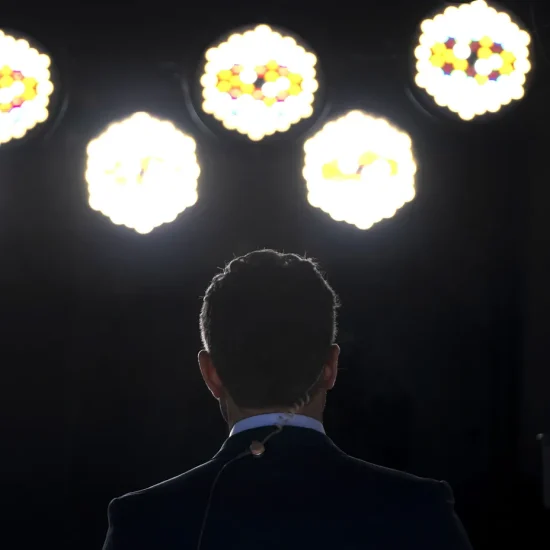

DIS-OBEDIENT WOMEN: How a Small Group of Faithful Women Exposed Abuse, Brought Down Powerful Pastors, and Ignited an Evangelical Reckoning. By Sarah Stankorb. Nashville, TN: Worthy Publishing, 2023. 325 pages.
It is well known—or it should be well known—that most religious traditions are patriarchal. The assumption is that men should lead, and women follow/submit to their leadership. If you’re old enough maybe you remember (or have seen on nostalgic TV channels) the 1950s show Father Knows Best. It’s a theme that runs through history. While the version of patriarchalism that was featured on TV seemed rather benign, in reality, it can be quite dangerous. Rape, abuse, and more serious violence have all been excused because men are more believable than women, or so we’ve been told. Religion, including Christianity, has tended to reinforce this message. Consider the words found in the New Testament that tell us that women should be silent in the church (1 Cor. 14) or that women should not teach or have authority over men (1 Tim 2:11-15). The passage from 1 Timothy 2 has been used to instill in women the belief that because Eve sinned, a woman needs to stay home and have babies so that she might be saved. Apparently, grace is for males only since women need to have babies if they’re going to be saved.

Robert D. Cornwall
Things have begun to change in recent years, at least in the larger society and in some faith communities (my denomination has been led by two women for the past eighteen years), but there are still many Christian traditions that forbid women from taking leadership in the church (though women can teach other women and perhaps children, at least until they reach a certain age. However, please do not call them pastors—so the Southern Baptist Convention has ruled). The message that is still being broadcast in some circles is that women should submit to the male head. That could be one’s father, husband, or pastor (who is male). With this male-female hierarchy in place, is it any surprise that we’re seeing a strong authoritarian trend circulating in our social context? This trend has its roots in extremely conservative religious communities. While we’re seeing a resurgence of patriarchalism in our society, at least a few women who have experienced this kind of religiously inspired patriarchalism/authoritarianism have stood up and said no more. They have been tagged as Disobedient Women. Their story has been told by Sarah Stankorb in her book Dis-Obedient Women.
Sarah Stankorb is a journalist who has been studying the above-mentioned trends for some time. She began her research by discovering blogs where “disobedient women” revealed horrific stories of rape, abuse, authoritarianism, and the religious underpinnings of these experiences. Stankorb brings to the conversation undergraduate and graduate degrees in religion, along with her experience as a journalist. Regarding her journalistic experience, she has focused her attention on the intersection of religion, politics, gender, and power. We see this background on display as she explores the stories of women who have stood up to authoritarian religion and revealed its dark side to a wider public. As she tells these stories, she weaves in her own experiences growing up with an abusive father and her attempts to find solace in her faith. As for her own faith situation, she admits that it’s complicated.
Stankorb shares with us that over the years, her “imagination, my workday, has been consumed by people who suffered much more than having disappointing Scripture quoted at them. They were abused by their church or pastor, or by their family justifying harm as Christlike and necessary” (p. 3). We meet these women and some men, but mostly women, whom Stankorb first met online. In this book and earlier magazine articles, she reveals their stories. I wish I could say that I found the contents of the book shocking, but I can’t. I witnessed some of the things she reveals during my own life and even bought into the message as a young male caught up in conservative evangelicalism. Her discussions of Bill Gothard and his influence on conservative Christian communities brought to mind old memories. While I wasn’t shocked by what I read, I did learn a great deal from her revelations about some of the deeper dimensions of the ultra-conservative Christianity represented by people like Gothard, James Dobson, and Jerry Falwell.
When it comes to the sources on which Stankorb bases this book, her work began with reading blogs where women revealed their personal stories of abuse and worse. After reading these blogs, she began to contact the women so she could gain even better insight into their experiences. After doing her research, Stankorb began putting together a book that would tell these stories to the broader public. Considering the increasing embrace of authoritarianism in the United States and elsewhere (Victor Orban in Hungary and Vladimir Putin in Russia to name but two examples of figures some religious and political conservatives in the United States want to emulate), this book will help the public better understand why and how this populist authoritarianism is taking hold in the United States. People like Josh Hawley and Donald Trump are simply embracing an ideology present in conservative religious communities that have been influenced by the teachings of people like Gothard and Dobson, as well as the patriarchalism found in conservative denominations like the Southern Baptist Convention.
Stankorb divides the twenty-one chapters of Dis-Obedient Women into nine sections. She begins the book with a section titled “Womb-Man.” In the first of two chapters in this section, Stankorb shares information about a movement known as “Quiverfull.” This movement teaches that women must marry and bear as many children as possible (ever hear about the Duggar family?). She reveals who the teachers are and their message, as well as the implications. The second chapter titled “The Daughters,” tells the stories of how this idea was transferred to daughters, largely through homeschooling. In other words, parents prepared their daughters to follow their example and bear as many children as possible. As we hear the stories of the wives and daughters caught up in this movement, we quickly begin to see signs of hypocrisy, as Christian leaders engaged in sexual predation, using their authority over their communities and families. It’s all rather ugly and the movement grounds itself in conservative Christian theology.
The next section, titled “The Evangelical Pope.” This section offers three chapters detailing the religious empire of Bill Gothard and his message of living under the patriarchal “Umbrella of Protection.” These three chapters and others in the book brought back memories of my exposure to Gothard’s “ministry” back in the 1970s and the early 80s. Back when I was introduced to Gothard his organization and platform was called “the Institute of Basic Youth Conflicts.” I attended two of his multi-day seminars that filled the basketball arena at the University of Oregon. I had my red binder with all the materials, where we learned all about God’s “umbrella of protection,” where the father/husband served as the stand-in for God, holding God’s umbrella protecting wives and children. His teaching influenced many who wholeheartedly embraced his principles of life. While he portrayed himself as an exemplar of the godly life, as time went on that saintly aura began to tarnish as it became known that he had strange proclivities. We learn here some of those proclivities, as Stankorb reveals the stories of those caught up in Gothard’s web of influence. Apparently, Gothard had a thing for young, usually blonde, girls whom he essentially groomed for his sexual pleasure. It doesn’t appear that he had sexual relations with them, but he liked to play footsies and put his hands in places he shouldn’t. It’s all horrific, but even worse is that he influenced so many Christians who embraced his teachings with tragic consequences.
After hearing these stories, Stankorb offers three chapters under the section title “The Unsilenced.” She writes in Chapter 6, which is titled “Compendium of the Accused,” that “when girls are taught ‘Biblical womanhood’ equates with purity and submission, they are trained to feel responsible for protecting men from their allegedly God-ordained sexual appetites — dress modestly, avoid front-to-front hugs, vow virginity until marriage — but also obliged to yield to authority figures: their pastors, fathers, men. Through one lens, they are delicate, precious. But through another, easy prey” (p. 69). We read in these three chapters about numerous cases where men, often pastors and youth ministers, used their authority to force women to have sex with them and then used this same religious authority to silence them. While many have remained silent, other women who were abused, stood up and shared their stories. The willingness of these women to tell their stories took great courage as they were often ostracized by their faith communities and even families for speaking up.
The next section explores movements that emphasize divine sovereignty and how that emphasis has worked out in practice through patriarchal teachings. In these two chapters, we encounter the ministry of C.J. Mahaney which goes by the name “Sovereign Grace Ministries.” In these two chapters, we encounter how a conservative Reformed/Calvinist tradition that emphasizes submission to pastoral authority serves as the foundation for a narrow patriarchalism and its impact. When it comes to this movement, we see how its teachings led to spiritual manipulation, abuse, and cover-up among leaders and followers influenced by Mahaney’s teachings. It should be noted that Mahaney was involved in the patriarchalist/complementarian organization Council on Biblical Manhood and Womanhood, an organization founded by Wayne Grudem and John Piper. Mahaney was also connected to Al Mohler of Southern Baptist Seminary.
Unfortunately, there is more to come. In a section titled Anonymous but Not Invisible,” we encounter a set of chapters that reveal the dark side of the homeschooling movement and for the first time the teachings of James Dobson. Dobson seemed rather benign at first. After all, he was a professor at a prestigious medical school and author of a book on discipline and parenting that seemed to be based on secular psychological theories (with a dash of the Bible). Of course, I should have seen the problems when I first encountered him, but he was so popular. In these two chapters, we see the effects of Dobson’s teachings on corporal punishment and controlling strong-willed children as well as revealing major problems that emerged within the homeschool movement. Thus, we encounter stories told through blogs like Homeschool Anonymous that reveal how young people were manipulated and oppressed. In telling their stories through blogs like Homeschool Anonymous, these disobedient women challenged a “religious movement that was not so quietly reshaping our country.” Therefore, they wanted “the rest of us to see the danger they knew intimately” (p. 147). Now, Stankorb is making their stories known to an even larger audience.
We’re not finished yet. Perhaps you’ve heard about the “Purity” movement within conservative Christianity, where “true love waits” and dating is kissed bye. In this movement, we again see the kind of patriarchalism instilled by people like Bill Gothard. We read here about women, who as young girls were taught to be pure, wear their purity rings, and then ended up being sexually abused by religious leaders who used their authority over them and then cast them aside as damaged goods. Besides learning of the “Purity” movement that took root in conservative churches, we are introduced to the “Me Too Movement” that emerged within Christian communities, which helped bring to light the effects on women that we’ve been reading about up to his point. Thus, in this section titled “True Love and Side Hugs” we read about women who were raped by church leaders and then ignored or disbelieved by authorities. Maybe you’ve read about the problems of sexual harassment and assault that have been revealed as taking place among pastors and leaders within the Southern Baptist Convention along with the mishandling of the reports that began to emerge. Once again, the dark side of patriarchalism is revealed.
The penultimate section of the book is titled “Whose Dominion?” The focus here is on a leading figure in Christian Nationalism, a man named Doug Wilson, whose church, school, and seminary, located in Moscow, Idaho, has all the problematic marks of the patriarchalism we’ve already read about. Once again we see in Wilson’s teachings an emphasis on patriarchy, along with submission to authorities whether fathers, husbands, or pastors. In other words, we see the religious foundations of the authoritarianism that is creeping into American society. Stankorb shows us how Wilson’s teachings led to sexual abuse within that community and in other churches influenced by Wilson’s teachings. We also once again encounter figures such as John Piper, who offer similar teachings. One of the items discussed here is the teaching of Wilson and his wife that wives are to “cultivate a sort of lovely garden for their husbands and ‘of course, a husband is never trespassing in his own garden'” (p. 213). In other words, men can demand sex from their wives whenever they wish, and wives must submit. In this teaching forced sexual relations within marriage are not considered rape. Of course, women are responsible for keeping their husbands faithful, because men can’t control their sexual appetites. So, if they don’t service their husbands, they’ll go elsewhere.
Other teachings accompany these teachings that are not gender-related but are connected to a growing Christian Nationalist movement. Thus, we also read about the church’s resistance/defiance of pandemic restrictions and support for such things as the January 6th insurrection. What we see here is various forms of what is known as dominionism; an ideology that teaches Christians to take dominion over all forms of society including the government (we see this taking place at all levels of government beginning with school boards). As part of this effort to take dominion over society, Christians are being taught that if they have enough babies, keep them out of public schools, and mobilize strategically, they can take control of society and impose biblical law (theonomy) on society. The ironic thing is that many who warn against the institution of Shariah (Islamic law) are the biggest proponents of dominionism. The takeaway from this section is that patriarchalism takes many forms, and among those who are revealing the reach of its tentacles are women like those whose stories are being told in Dis-Obedient Women.
The final section of Stankorb’s book is composed of two chapters. The section is titled “The Rewards of (Dis)-Obedience.” In these final two chapters of Dis-Obedient Women, Stankorb reveals some of the impact that the women who resisted and disobeyed have had. Among the stories told here is the departure of evangelical Bible teacher Beth Moore from the SBC because she was treated so horribly by male SBC leaders, despite her popularity as a bible teacher. We read about the efforts to hold SBC leadership accountable, along with a report on sexual abuse within the SBC among pastors and youth leaders. While this is still ongoing and efforts have been made to bury the report, the fact that this abuse has come to light is a step forward. We’re reminded again of the stories of women who stood up, spoke up, and revealed the underside of patriarchal religious movements that lend themselves to abuse and oppression. Stankorb concludes the final chapter by noting that “They were called disobedient, Jezebel, Satan’s mistress, while they tried to protect others. From them I learned a vital lesson: Disobedience is not wrong when you defy those doing harm. It might be the thing that saves the rest of us in the end” (p. 265).
In Dis-Obedient Women, journalist Sarah Stankorb has woven stories together that reveal the dark underside of a significant portion of conservative Christianity. Some of us will recognize many of the players in this story, especially those of us exposed to people like Bill Gothard. I look back at that time in my life and the influence Gothard had on the churches I was involved in. It sounded so “biblical.” Gothard had a proof text for every “principle” that he espoused. If you are of the right mindset that embraces biblical literalism, then you might be susceptible to such teachings. I remember how the leaders of the church I served as a youth minister when I came out of college used Gothard’s materials for men’s ministries and pastoral leadership. I even attended Gothard’s pastor’s conference. I remember how my female friends were told that they were responsible for the behavior of guys like me. Yes, I have encountered in various forms at least some of the teachings and ideas revealed here. I embraced some of them at certain points in my life. So, I understand how they can take root and influence movements beyond the church. It’s important to remember that Christian Nationalism has been present within conservative Christianity for a very long time (it once had roots in more liberal churches also).
I believe that Sarah Stankorb, in writing Dis-Obedient Women has done a great service because she reveals the dangers of authoritarian religion. That authoritarianism, which takes various forms in our society, is rooted in the teachings of people like Bill Gothard, C.J. Mahaney, James Dobson, and Doug Wilson, among others. So, if you want to know what the implications of authoritarian forms of religion are, just read this book. It is truly eye-opening.
This review originally appeared on BobCornwall.com.
Robert D. Cornwall is an ordained minister in the Christian Church (Disciples of Christ). Now retired from his ministry at Central Woodward Christian Church (Disciples of Christ) of Troy, Michigan, he serves as Minister-at-Large in Troy. He holds a Ph.D. in Historical Theology from Fuller Theological Seminary and is the author of numerous books including his latest “Second Thoughts about the Second Coming: Understanding the End Times, Our Future, and Christian Hope” coauthored with Ronald J. Allen. His blog Ponderings on a Faith Journey can be found at www.bobcornwall.com.






